The Australian Bureau of Statistics (ABS) today released the national accounts for the March quarter, which registered 1.0% growth in real GDP over the quarter and a 3.1% rise over the year.
On a per capita basis, real GDP rose by 0.7% over the quarter and was up by 1.5% over the year.
Real national disposable income (NDI) per capita also rose by 1.5% over the quarter and was up 0.9% over the year.
However, most importantly for Australian workers, average compensation per employee rose by just 1.6% in the year to March, and remained negative after adjusting for inflation (1.9%).
According to the ABS, seasonally adjusted GDP growth for the quarter was fairly broad-based, but with net exports driving most of the growth:
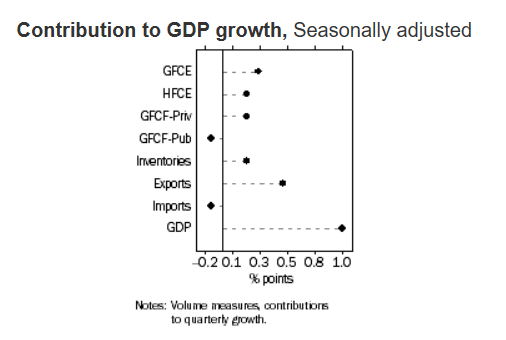
Quarterly final demand, which excludes export volumes, rose by 0.6% over the March quarter, driven largely by VIC (+1.9%) and NSW (+0.7%):
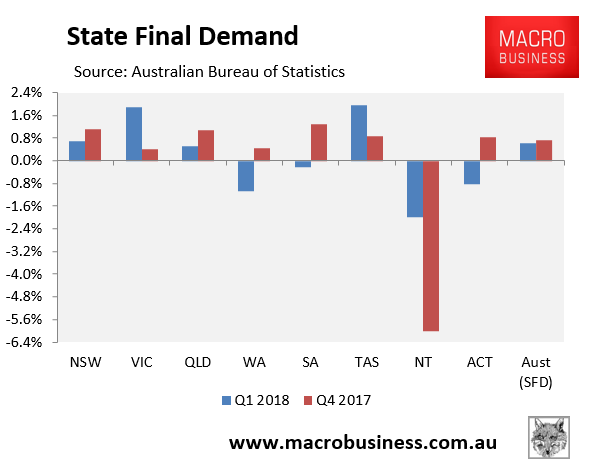
In the year to March 2018, final demand growth was solid, growing by 3.2% nationally. VIC, TAS, NSW and QLD led the way, whereas WA and the NT lagged:
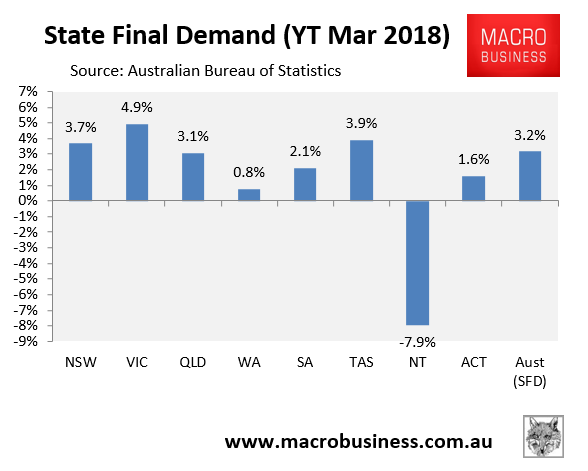
The terms-of-trade rose by 3.3% over the quarter in seasonally adjusted terms and by 1.6% in trend terms. However, over the year it fell by 2.6% in seasonally adjusted terms and by 0.7% in trend terms:
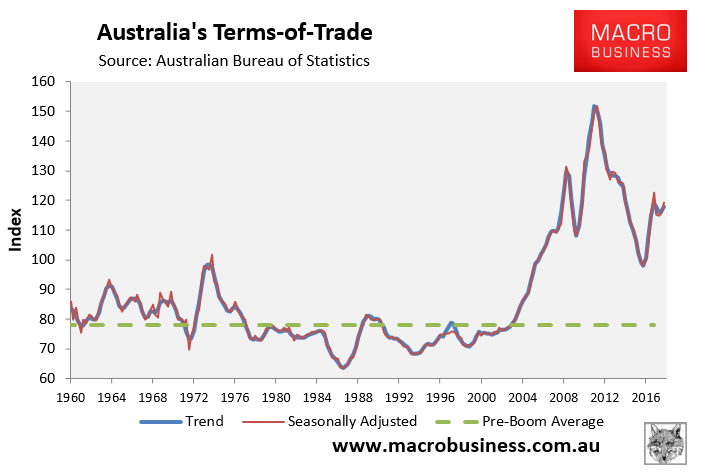
The rise in the terms-of-trade supported national income growth, with real NDI rising by 1.9% over the quarter but by only 2.5% over the year.
However, after population growth, per capita NDI rose by 1.5% over the quarter and by 0.9% over the year.
In trend terms, since December 2011, per capita NDI has risen by just 0.1% versus 6.0% growth in real per capita GDP:
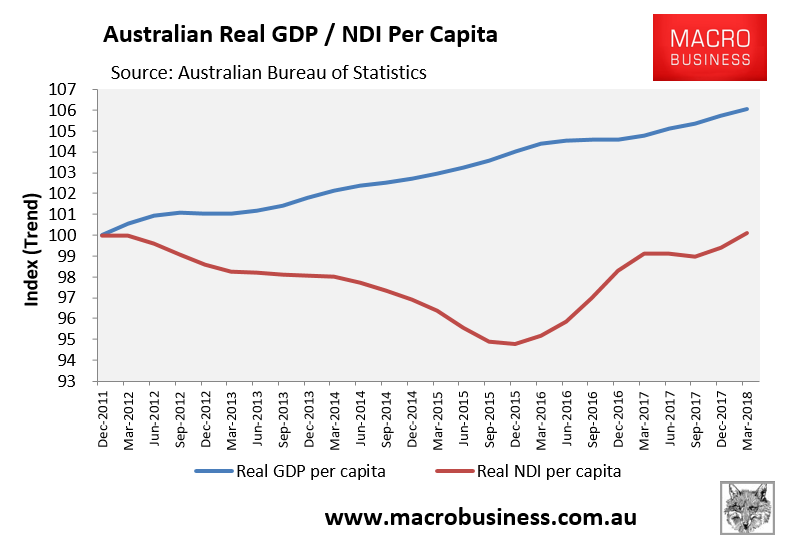
As noted above, average compensation of employees remains in the gutter. While it rose by 0.4% in the March quarter in nominal terms, it was up just 1.6% in the year to March 2018:
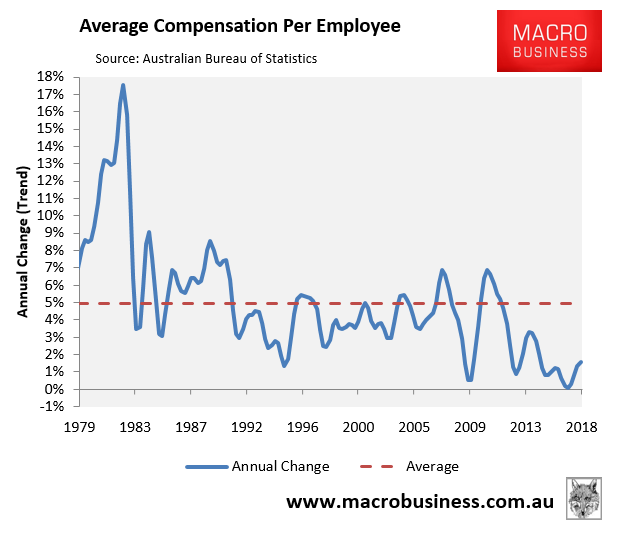
Adjusting for inflation, the situation facing Australian workers is even worse, with real average compensation falling (down 0.3% year-on-year).
After falling recently, nominal GDP rebounded in the March quarter, but remains weak. Nominal GDP rose by just 2.2% over the quarter but just 3.9% over the year:
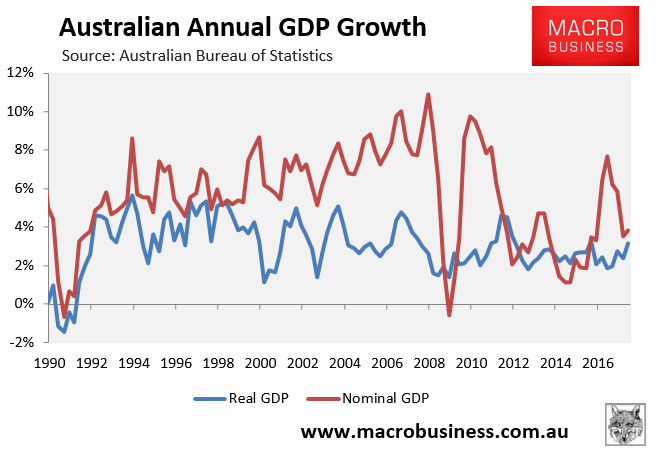
The below chart shows that trend nominal GDP is again tracking well below the average since 1990, which continues to make life difficult for Government finances:
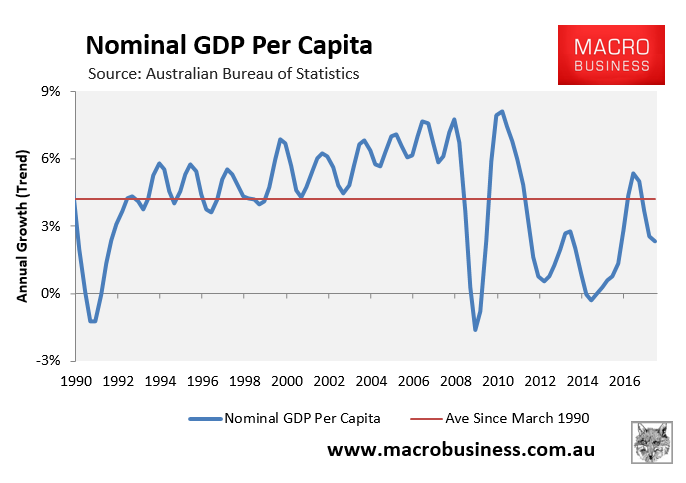
After four consecutive quarterly falls, real GDP per hour worked rebounded by 1.4% in the March quarter but was up only 0.6% over the year, suggesting sluggish labour productivity:
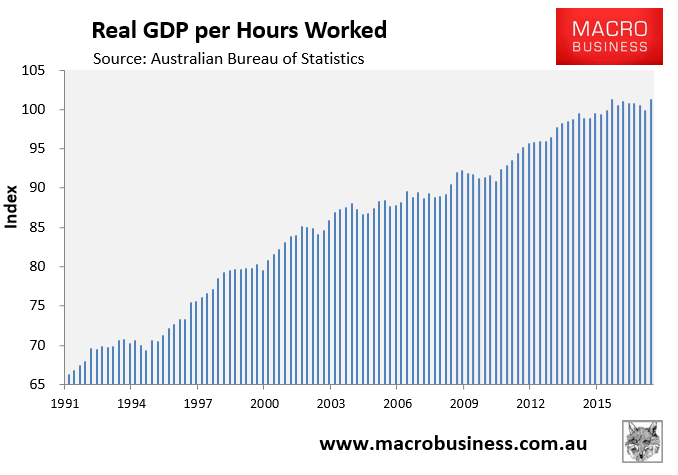
Meanwhile, the household savings ratio continues to fall, down another 0.2% to 2.1% – the lowest reading in the post-GFC era:
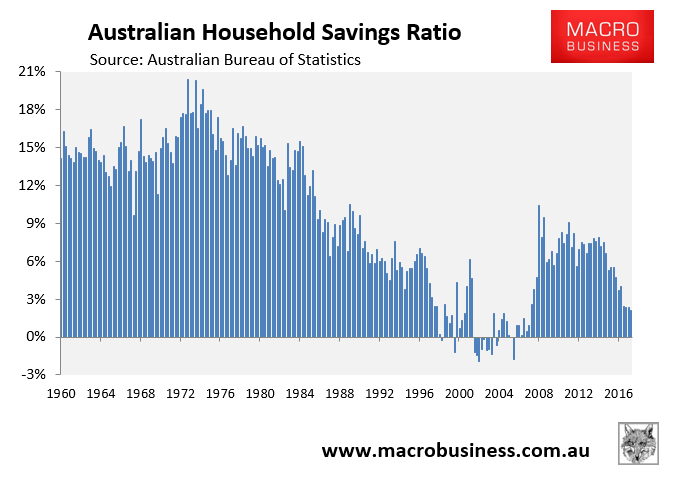
In summary, while the headline figures are strong, there is continued weakness under the hood.
First, Australian workers’ incomes remain in the gutter, with the average compensation of employees continuing to fall in the year to March when adjusted for inflation.
Second, with wages and salaries going backwards in real terms, households have been running down their savings, as evidenced by the continued expansion of household debt and the erosion of the household savings rate to near its lowest level in the post-GFC period. This is clearly an unsustainable support to household consumption, which is one of the areas supporting domestic demand (along with government spending).
Third, Australia’s 10-year annualised growth in per capita GDP continues to track at its lowest level on record – i.e. even worse than the 1980s and early-1990s recessions:
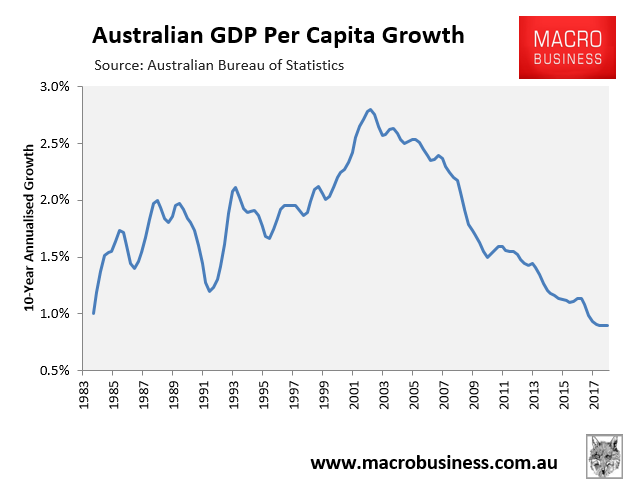
The slump in GDP per capita is equally evident when quarterly growth is plotted since the early-1990s recession:
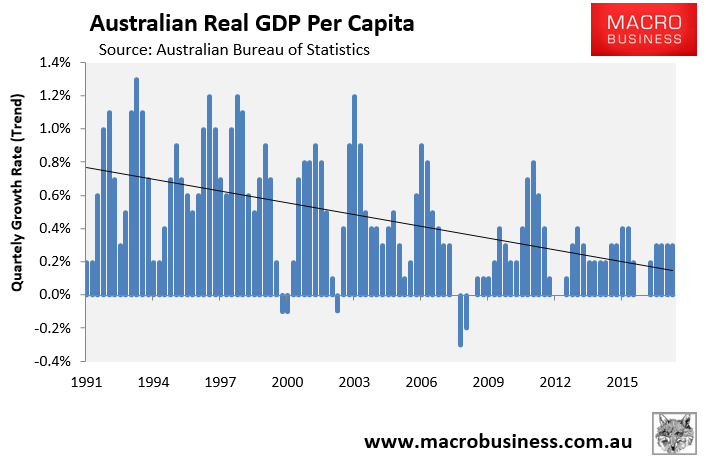
Finally, labour productivity is weak, as evident by sluggish growth in GDP per hour worked.
So, while there is still the ‘illusion’ of growth at the aggregate economy level, thanks in part to force-fed mass immigration and government spending, the situation facing ordinary workers remains glum.
This is Australia’s ponzi economy in action: everyone’s share of the economic pie is not increasing sufficiently, wages are going backwards, and living standards in the big cities are being crush-loaded by the never ending people flood.

